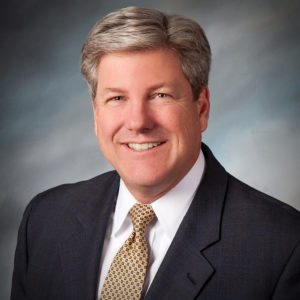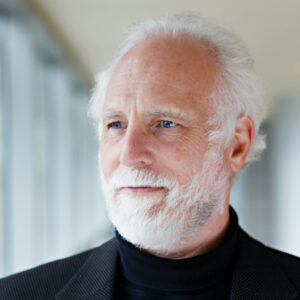Published July 29th, 2014
By Bob Clark
Back in June, Financial-Planning.com put a curious headline on a story: “NAPFA Faces Member Loss After Fee-Only Rule Change.” You may remember that the rule change in question ended NAPFA’s allowing its fee-only members to own up to 2% of commission-charging financial services businesses.
Simply put, NAPFA tightened its definition of fee-only, and when a professional organization tightens its standards—particularly in a major way, such as this change—it would seem to be a foregone conclusion that it will lose some members: those professionals who practiced under the old rule and decline to make the necessary changes to comply with the new rule.
A professional organization is about setting high client-oriented standards that, for many reasons (usually economic, but not necessarily in the NAPFA case), some people don’t want to live up to. The easiest way for any organization to attract more members would be to lower its professional standards, but professional organizations are not popularity contests.
Or at least, they shouldn’t be, which brings me to a white paper written by Knut Rostad, founder and president of the Institute for the Fiduciary Standard. Released in May, “Fiduciary Advisors Must Craft, Uphold and Advocate for Fiduciary Best Practices” is an unusual paper in that it’s a call to action for professional advisors and the organizations that accredit them (including the CFA Institute, AICPA, CFP Board, fi360, CEFEX, Paladin and 3Ethos) to come together in a “Best Practices Board” to create a single set of professional practice standards for fiduciary financial advisors. The paper makes a powerful case for why such a standard is necessary—and how the future of independent financial advice may depend on it.
Rostad’s case for the urgency of those best practices rests on the current distrust of Wall Street, which buckets of research shows has spilled over to brokers and independent financial advisors. For instance, he cited the Harris Reputation Quotient Survey, which has measured confidence in Wall Street for 23 years and found in 2012 that some “51% of respondents had very little or no confidence in the financial industry.” While 28% agree that “people on Wall Street are as honest and moral as other people,” 70% think “most people on Wall Street would be willing to break the law if they believed they could make a lot of money and get away with it.”
I suspect many independent advisors believe that the widespread erosion of Wall Street’s public reputation since the 2008 mortgage meltdown has been a boost to their business, and in some ways it has. Certainly, the independent community has gained some new clients defecting from brokers’ books of business. However, at the same time, the flood of breakaway brokers joining the independent ranks—all too often without the traditional independent client-centered ethos—can’t help but reduce independent advisors’ anti-Wall Street reputation.
Rostad offered some evidence to support this view: “In State Street’s 2013 Forgotten Investor Survey, according to InvestmentNews, just 15% of respondents reported trusting their advisor. Industry consultant Chip Roame has a more ominous view. He says the public believes ‘the whole industry is evil…you are lumped in with Madoff.’”
Additionally, I suspect the dramatic growth in assets managed by fledgling robo-advisors suggests that today’s younger Gen X and millennials don’t distinguish between Wall Street brokers and independents the way baby boomers did and still do.
Rostad offered some evidence that specifically details just what investors find lacking in their relationships with advisors. “Some recent research and commentary puts the blame directly at the feet of advisors who communicate incompletely or unclearly. Such poor communications means clients do not know the fees and expenses they pay for advisor services or how advisors are compensated.”
For example:
- Rostad referred to a panel at Ron Carson’s Peak Advisor Alliance conference where consultant Michael Maslansky brought investors on stage to react to a series of pre-recorded pitches from advisors. The consensus of the investors was captured by one observer this way: “The way advisors talked about how they were paid—belaboring the concepts of ‘fees’ and ‘fiduciary mandates’—made it seem as though they had something to hide. What the clients wanted was a number. How much do I pay you?”
- Jack Waymire, CEO of the Paladin Registry, a company that screens RIAs and IARs, surveyed his member registered advisors and found “‘advisors want to selectively disclose the information they provide to investors.’ Eighty-six percent said they did not practice voluntary transparency or documentation; only 14% of advisors voluntarily discussed their method of compensation when marketing their services,” Rostad wrote.
- 3Ethos CEO Don Trone wrote in a Financial Advisor magazine column about deception. Rostad said, “Citing practices including ‘pay to play,’ ‘obtuse disclosures’ and ‘faux fiduciaries,’ Trone notes these involve efforts ‘to get the public to believe something that’s not true’ and are at the core of the state of distrust. ‘People who deceive or attempt to deceive are the key reasons the public puts so little trust in our industry,’ Trone said.”
Unfortunately, as Rostad forcefully illustrated, investor-confidence-restoring reregulation isn’t likely to come from the SEC under its Dodd-Frank mandate. The paper listed six assumptions made in the commission’s “request for information” (RFI) about broker and advisor reregulation under Section 913 that indicate an inclination to erode rather than strengthen fiduciary standards:
The RFI picture of fiduciary duties is far more restricted and far less stringent than the fiduciary duties required by the Investment Advisers Act of 1940. An analysis by the Institute concludes the RFI:
- Sharply restricts what is defined as fiduciary advice and adds new ambiguity about the difference between fiduciary advice and sales communications. […]
- Allows fiduciary duties to be waived […] through contract provisions, marketing materials or disclosure that does not require informed consent. […]
- Suggests disclosure best addresses conflicts. [And fails to note] that, irrespective of the disclosure, the recommendation must remain in the best interest of the client. […]
- Omits mention of ‘informed consent,’ [allowing] more casual disclosure and oral disclosure. […]
- Rebrands ‘conflicts.’ There is no mention of any harm associated with conflicts [and] omits any mention of associated benefits of avoiding conflicts. […]
- Redefines ‘loyalty.’ Loyalty today means ‘do the right thing.’ [The RFI] essentially urges that the duty of loyalty be redefined to mean ‘disclose doing the wrong thing.’
“Taken together,” Rostad concluded, “these assumptions represent a profound departure from the Advisers Act. If adopted in rulemaking, fiduciary duties would be effectively removed for brokers and advisors giving investment advice to retail investors.”
The remedy to both the current erosion of public trust of advisors and the SEC’s likely failure to enact confidence enhancing regulations, Rostad suggested, is for advisors to create standards of practice that would clearly differentiate fiduciary advisors from those who practice under the SEC’s inevitably watered-down standards. “Fiduciary conduct nurtures investor trust, the central pillar on which capital markets and the economy depend,” according to Rostad.
Consequently, he wrote: “Fiduciary advisors need to act. They need to craft and uphold and articulate the vital importance of fiduciary best practices that investors want and sorely need.”
Advisors need to give extra “attention to duties in areas where individual investors face significant risk and appear to be greatly concerned, i.e., conflicts of interest, fees and expenses, and unclear or inaccurate communications,” Rostad wrote.
He stated that the Institute Best Practices Board “seeks to shift the direction of the discussion of fiduciary duties and definition of acceptable best practices to reflect the principles and values so well expressed by highly respected jurists and regulators in recent history when they, also, spoke of ‘the highest standard under the law.’”
I can’t help but wonder if some of the organizations that Rostad hopes to unite on the Best Practices Board aren’t already too caught up in their own popularity contest to even consider such a collective action. Even in their absence, I hope the board does succeed in raising the bar for how fiduciary advisors deliver client services. However, I suspect that ultimately one organization will step up to create the high best practices standards that Rostad advocates—and to articulate the need for them so effectively that the rest of the advisory world will be forced to follow in its wake.

